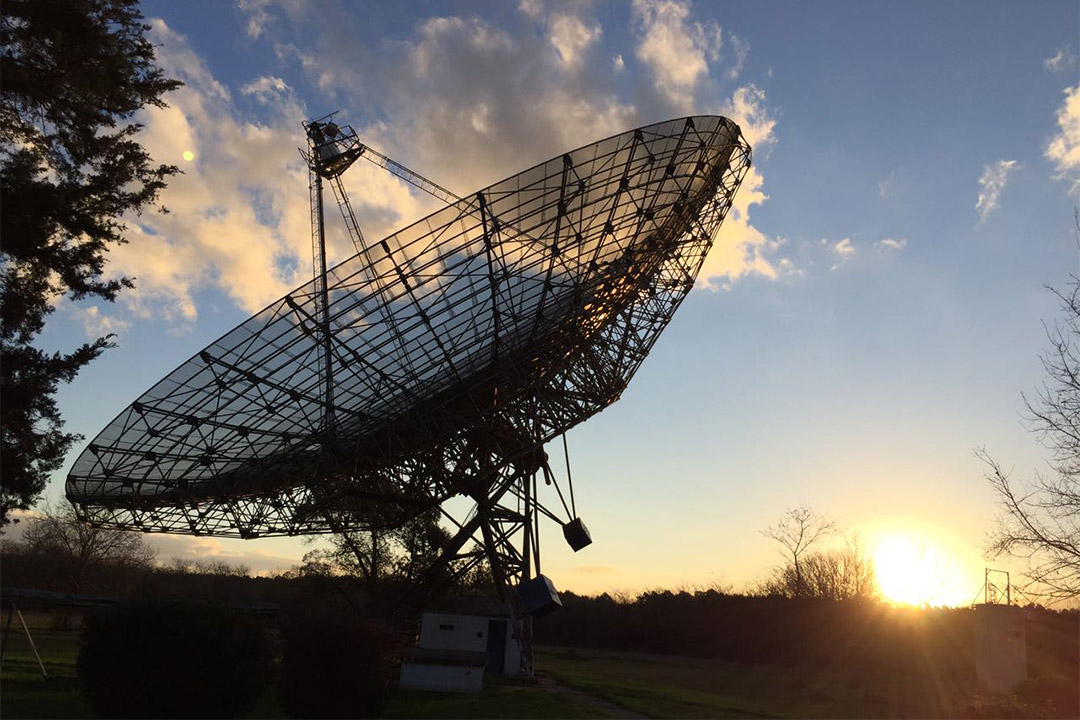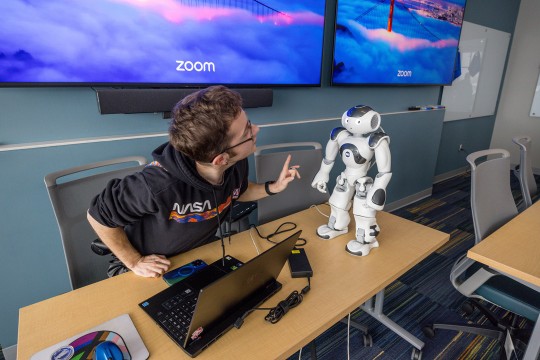Scientists complete yearlong pulsar timing study after reviving long-dormant radio telescopes
RIT and IAR scientists outline the findings in a new ‘The Astrophysical Journal’ paper
PuMA collaboration, RIT/Argentina
Scientists from RIT and IAR just completed a yearlong pulsar timing study using two upgraded radio telescopes in Argentina that previously lay unused for 15 years. The results will be published in ‘The Astrophysical Journal.’
While the scientific community grapples with the loss of the Arecibo radio telescope, astronomers who recently revived a long-dormant radio telescope array in Argentina hope it can help modestly compensate for the work Arecibo did in pulsar timing. Last year, scientists at Rochester Institute of Technology and the Instituto Argentino de Radioastronomía (IAR) began a pulsar timing study using two upgraded radio telescopes in Argentina that previously lay unused for 15 years.
The scientists are releasing observations from the first year in a new study to be published in The Astrophysical Journal. Over the course of the year, they studied the bright millisecond pulsar J0437−4715. Pulsars are rapidly rotating neutron stars with intense magnetic fields that regularly emit radio waves, which scientists study to look for gravitational waves caused by the mergers of supermassive black holes.
Professor Carlos Lousto, a member of RIT’s School of Mathematical Sciences and the Center for Computational Relativity and Gravitation (CCRG), said the first year of observations proved to be very accurate and provided some bounds to gravitational waves, which can help increase the sensitivity of existing pulsar timing arrays. He said that over the course of the next year they plan to study a younger, less stable pulsar that is more prone to glitches. He hopes to leverage machine learning and artificial intelligence to better understand the individual pulses emitted by pulsars and predict when glitches occur.
“Every second of observation has 11 pulses and we have thousands of hours of observation, so it is a lot of data,” said Lousto. “What we hope to accomplish is analogous to monitoring the heartbeat one by one to learn to predict when someone is going to have a heart attack.”
Lousto said Ph.D. students from RIT’s programs in astrophysical sciences and technology, mathematical modeling, and computer science are at the forefront of the analysis. RIT has a remote station called the Pulsar Monitoring in Argentina Data Enabling Network (PuMA-DEN) to control the radio telescopes and store the data collected. He said the opportunities presented by the collaboration are important for the students from the College of Science and Golisano College of Computing and Information Sciences because “the careers in astronomy are changing very quickly, so you have to keep up with new technology and new ideas.”
In the longer term, Lousto said RIT and IAR are seeking out other radio telescopes that can be upgraded for pulsar timing studies, further filling the gap left behind by Arecibo. RIT and IAR’s observations seek to contribute to the larger efforts of the North American Nanohertz Observatory for Gravitation Waves (NANOGrav) and the International Pulsar Timing Array, an collaboration of scientists working to detect and study the impact of low frequency gravitational waves passing between the pulsars and the Earth.
For more information, you can read the study that will be published in The Astrophysical Journal on the arXiv preprint server.








